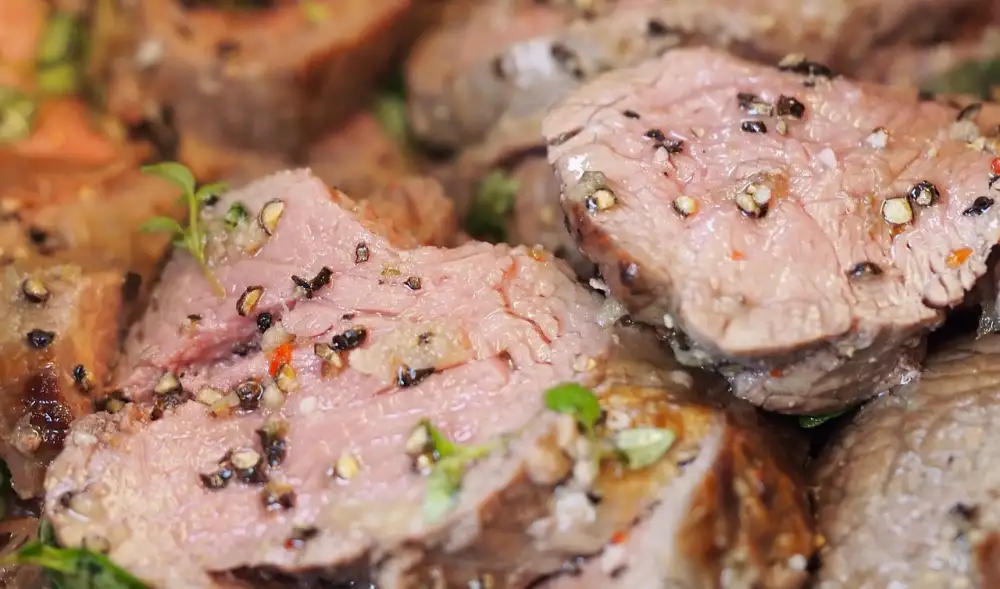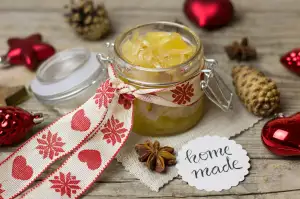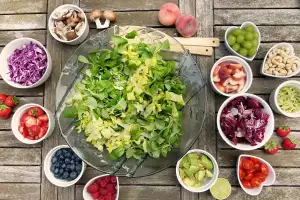Unlocking the Art of Medium Rare: Savor the Perfectly Cooked Meat with a Warm, Red Center

- Defining Medium Rare: A Delicate Degree of Doneness
- Achieving the Ideal Medium Rare: Cooking Techniques and Tips
- The Art of Savoring Medium Rare: Appreciating the Warm, Red Center
- Pairing Medium Rare: Enhancing the Experience with Complementary Flavors
- Health Considerations: Is Medium Rare Safe to Eat?
- Common Misconceptions about Medium Rare: Debunking Myths and Stereotypes
Medium rare is a culinary term that has become synonymous with perfection. It represents the delicate balance between flavor and texture, creating a dining experience that is truly unforgettable. When it comes to cooking meat, achieving the ideal medium rare is an art form in itself. It requires precision, skill, and an understanding of the science behind the process. In this article, we will delve into the world of medium rare and explore how it can elevate your culinary creations to new heights. So prepare your taste buds for a journey of exquisite flavors and tantalizing textures as we unlock the art of medium rare.
Defining Medium Rare: A Delicate Degree of Doneness
Medium rare is a term often used in the culinary world to describe the perfect balance between tenderness and juiciness in cooked meat. It refers to a specific degree of doneness that results in a warm, red center with a slight hint of pink.
To achieve medium rare, the internal temperature of the meat should reach around 130°F to 135°F (54°C to 57°C). This gentle cooking process allows the proteins within the meat to coagulate while retaining moisture, resulting in a tender and succulent texture.
The delicate degree of doneness that characterizes medium rare is highly sought after by food enthusiasts and professional chefs alike. It showcases the natural flavors and textures of the meat without compromising its juiciness or tenderness.
Whether it's a perfectly seared steak, a juicy lamb chop, or a tender piece of salmon, cooking to medium rare ensures that you experience the full potential of the meat's flavor profile. The warm, red center adds depth and richness to each bite, creating an unforgettable dining experience.
Mastering the art of achieving medium rare requires precision and practice. It involves understanding different cooking techniques, such as searing, grilling, or sous vide cooking, as well as knowing how to gauge internal temperatures accurately.
By embracing this delicate degree of doneness, you can unlock a whole new level of culinary enjoyment. So next time you cook meat, consider aiming for medium rare and savor every bite with its perfect balance of flavor and texture.
Achieving the Ideal Medium Rare: Cooking Techniques and Tips
Achieving the ideal medium rare requires precision and attention to detail. Start by selecting a high-quality cut of meat, such as a ribeye or filet mignon, with good marbling. Preheat your grill or skillet to medium-high heat to create a sear on the outside while keeping the center juicy and tender. Cook the meat for about 3-4 minutes per side, depending on thickness, flipping only once. Use a meat thermometer to ensure an internal temperature of 130-135°F (55-57°C), allowing for carryover cooking. Let the meat rest for a few minutes before slicing to allow the juices to redistribute, resulting in a perfectly cooked medium rare steak.
The Art of Savoring Medium Rare: Appreciating the Warm, Red Center
When it comes to savoring medium rare meat, the warm, red center is the star of the show. This perfectly cooked interior is a testament to the artistry of culinary skill. As you cut into a medium rare steak or roast, you'll be greeted with a tender and juicy texture that melts in your mouth. The vibrant red color signals that the meat has been cooked to perfection, allowing its natural flavors to shine through. Take your time to appreciate each bite, relishing in the rich and succulent experience that only medium rare can offer.
Pairing Medium Rare: Enhancing the Experience with Complementary Flavors
When it comes to savoring a perfectly cooked medium rare steak, the right pairing of flavors can elevate your culinary experience to new heights. The warm, red center of the meat provides a rich and juicy base that can be enhanced by carefully chosen accompaniments.
One classic pairing for medium rare steak is a robust red wine. The tannins in the wine help to cut through the richness of the meat, while its fruity notes complement the savory flavors. A full-bodied Cabernet Sauvignon or a bold Malbec can be excellent choices.
For those who prefer a lighter option, consider serving your medium rare steak with a refreshing chimichurri sauce. Made with fresh herbs, garlic, vinegar, and olive oil, this tangy and herbaceous condiment adds brightness and depth to each bite.
If you're looking for something more adventurous, try pairing your medium rare steak with a creamy blue cheese sauce. The sharpness of the cheese balances out the richness of the meat and creates a decadent combination that will leave your taste buds craving more.
Another fantastic option is to serve your medium rare steak alongside roasted vegetables. The caramelized flavors of roasted carrots or Brussels sprouts provide a delightful contrast to the tender meat. Add some garlic and herbs during roasting for an extra burst of flavor.
Remember, when choosing complementary flavors for your medium rare steak, it's important to strike a balance. You want flavors that enhance without overpowering the star of the show – the perfectly cooked meat. Experiment with different combinations to find your own personal favorite and unlock a whole new world of culinary delight.
Health Considerations: Is Medium Rare Safe to Eat?
When it comes to enjoying medium rare meat, many people have concerns about its safety. However, rest assured that properly cooked medium rare meat is safe to eat. The key lies in the quality of the meat and the cooking process.
To ensure safety, it is crucial to use fresh, high-quality cuts of meat from reliable sources. This reduces the risk of contamination and foodborne illnesses. Additionally, proper handling and storage practices are essential to maintain the integrity of the meat.
Cooking medium rare meat requires precision and attention to detail. It should be seared at a high temperature first to kill any surface bacteria, then cooked at a lower temperature until it reaches an internal temperature of 135°F (57°C). This ensures that harmful pathogens are eliminated while maintaining a warm, red center.
It's important to note that certain individuals, such as pregnant women, young children, and those with compromised immune systems, may need to avoid consuming medium rare meat due to their increased susceptibility to foodborne illnesses.
By following proper cooking techniques and considering individual health circumstances, you can confidently enjoy the artistry of medium rare meat while ensuring your safety.
Common Misconceptions about Medium Rare: Debunking Myths and Stereotypes
Despite its popularity among culinary enthusiasts, medium rare cooking often faces misconceptions and stereotypes. One common myth is that medium rare meat is undercooked and unsafe to eat. However, it's important to note that the internal temperature of medium rare meat reaches a safe level to kill harmful bacteria. Another misconception is that medium rare meat lacks flavor or tenderness. On the contrary, cooking meat to medium rare allows for a perfect balance of juiciness, tenderness, and natural flavors. It's time to debunk these myths and embrace the artistry of medium rare cooking.
In conclusion, embracing the artistry of medium rare cooking is a surefire way to elevate your culinary experience. By achieving the perfect balance of flavor and texture, you unlock a world of delicious possibilities. The warm, red center of medium rare meat offers a tender and juicy bite that is hard to resist. Paired with complementary flavors, it becomes an edible masterpiece that tantalizes the taste buds. And contrary to popular belief, medium rare can be enjoyed safely when prepared properly. So go ahead, explore the art of medium rare and take your dining adventures to new heights.
Published: 22. 11. 2023
Category: Food



